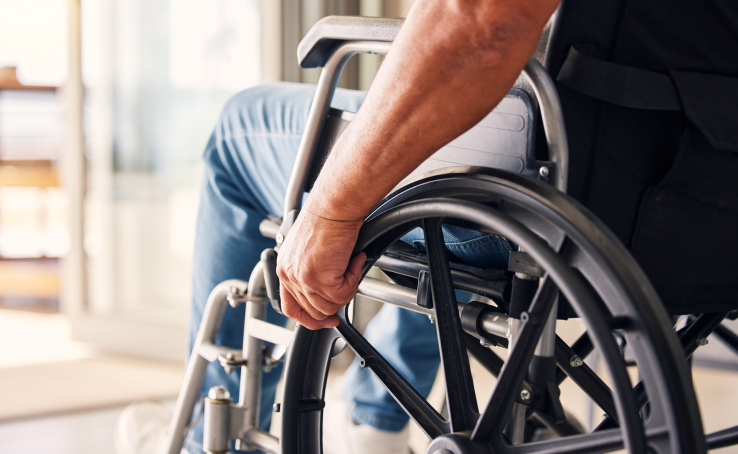Share your medical reports and get an exclusive offer tailored to your needs, requirements and preferences
Avg Price: $ 4500-$ 40000


Treatment Time
Recovery Time
Hospitalization Days
Success Rate
Spinal Cord Injury (SCI) is one of the major causes of morbidity and expanding cost in the worldwide healthcare system. Evidently, it affects around 250,000 to 500,000 people annually worldwide. More than 200,000 spinal injury cases are reported each year in India. 30,000 of these are related to spinal cord damage and paralysis of varying degrees. SCI can have an immediate and sometimes disastrous influence on one's quality of life, culminating in significant motor, sensory, and autonomic dysfunction.
In the last 50 years, orthopaedics has advanced significantly, especially in the field of Spinal Surgery. Emerging research on the efficacy of epidural stimulation has increased the potential of this procedure for treating individuals with spinal cord injury. It aims to address the central nervous system's inadequate capacity for recuperation.
Every year, more than 2 lakh people in India benefit from excellent spine surgeries such as Epidural Stimulation. Therefore, it is becoming easier every year to get the best doctor for epidural stimulation and the best hospital for epidural stimulation in India.
Spinal Cord Injury (SCI) is a serious medical disorder that often causes significant morbidity and long-term disability. Motor and sensory function below the site of injury is lost when the nerve cells running through the spinal cord get damaged. Major trauma is usually the cause of injury. Such injuries may lead to irreversible disability.
Vehicle collisions or road accidents are the main cause of Spinal Cord Injury, accounting for 38% of all new SCIs each year. 30% of injuries are caused by falls, 13% by violence, 9% by sports-related injuries, and 5% by medical and surgical causes.
Take Charge of Your Health
Book a Free Consultation

Epidural Stimulation is a Therapeutic technique that involves the application of electrical fields to the surface of the spinal cord facing the back. In this technique, electrodes are implanted on the dorsum of the dura (fibrous protective membrane of spinal cord). These are typically cylindrical linear multi-contact electrodes that are implanted through the skin in multicolumn paddle arrays via laminotomy (a surgical procedure of the spine to relieve pressure on the spinal cord or nerve roots).
The conductive surface of each contact is programmed individually, delivering a versatile combination of monopolar, bipolar, or multipolar stimulation. Lead cables are tunnelled to a remote pulse generator which is implanted below the skin. This rechargeable pulse generator can electrically be manipulated as per requirement.
Even in the case of chronic complete paralysis, epidural stimulation may recover functional and volitional motions of lower extremity after SCI.
To decide whether Epidural Stimulation is the best course of treatment for the patient and to create an individualised treatment plan, the pre-evaluation procedure is essential. Additionally, it aids in risk assessment and assures the best outcome for the patient. A group of medical experts, including neurologists, physiatrists, neurosurgeons, and rehabilitation specialists, conduct the tests and evaluations. Recognising the injury patterns can aid in pinpointing the precise site and kind of damage sustained. It can be done viably by following techniques:
Your Health is Our Priority
Book a Free Consultation
Whether a paddle lead or a percutaneous lead is the most appropriate for treating your pain will be decided by your doctor. Mostly used stimulators are percutaneous ones. However, if excessive scar tissue or anatomical impediments are blocking a percutaneous lead, your doctor can advise a paddle lead.
Irrespective of the type of Spinal Cord Stimulator to be used, the procedure is an outpatient one which is carried out while you are under general anaesthesia. The wires are then run under the skin to a little pocket that your surgeon will make on the side of your back or in one of your glutes after the implants are fastened down in a midline incision in your back. The implantable pulse generator is inserted into the pocket and wired up. Afterward, the doctor closes and covers both the incisions.
While Epidural Stimulation has shown promising results, particularly in the treatment of Spinal Cord Injury. However, it is not without potential complications. Some of the possible complications of this treatment may include:

The majority of the patients are able to resume most of their typical physical activity in eight weeks after surgical intervention. You will be advised to lighten up your work for the first 6 to 9 weeks after surgery. If a patient's profession requires heavy lifting, twisting, or bending then he/she might need some more time for resuming these tasks.
Patients should attend follow-up sessions with their doctor regularly to maximise the benefits of a spinal cord stimulator implant and ensure good recovery. In most circumstances, patients will have a one-week follow-up session for the evaluation of incision sites and pain management. Another appointment will be planned two weeks after the treatment to assess the x-ray scans of the spine and give the instructions accordingly.
Avail the Expert Health Advice
Book a Free Consultation
After receiving Epidural Stimulation, there are a few things you need to be aware of. As with the many other charging devices in our life today, you'll need to charge the system regularly. If you travel regularly, for instance, the airport security system’s potent electromagnetic fields may prevent your spinal cord stimulator from operating properly. The impact of power generators or power lines may be similar. It's advisable in these situations to disable your device until you are outside of these locations.
Due to the complexity and variety of Spinal Cord Injuries, there is no single, universally applicable success rate for their treatment. The degree and severity of the spinal cord injury, the promptness and efficacy of medical treatment, the patient's general health, and their reaction to therapy and rehabilitation are some of the variables that affect the success rate.
However, Spinal Cord Stimulation (SCS) has a long-term success rate that currently ranges from 47% to 74%. Epidural stimulation shows considerable potential in helping some patients regain some abilities. Some patients have even demonstrated gains in hand function, bladder and bowel control, enhanced core control, and even the capacity to breathe without the aid of a ventilator.
When compared to treatment costs in first world countries like the United Kingdom, Singapore, and the United States of America, epidural electrical stimulation for the treatment of spinal cord injuries is fairly economical in India.
The cost of treatment for a Spinal Cord Injury or epidural electrical stimulation in India is only about 35,000 USD to 45,000 USD, compared to the USA, where it costs between 70,000 USD and 100,000 USD. The price is significantly lower at some facilities, at about 32,000 USD.
As a result, the cost of therapy in India is three times cheaper than it is in the USA. Additionally, the patient obtains high-quality care while saving up to 70% on treatment costs, including travel.
The cost of diagnostics for Epidural Stimulation may include various preoperative evaluations and tests that are typically conducted before the surgical procedure. It mainly requires a full spine MRI scan. This scan might cost between 5000 and 10,000 rupees in India. The cost of an MRI scan is determined by the scan type (cervical, dorsal, or lumbar) and machine quality (1.5 or 3 Tesla). However, the price of a diagnostics for spinal cord injury varies significantly depending on the following factors:
Top 5 Doctors/ Surgeons for Epidural Stimulation
India’s top 5 Doctors/ Surgeons for Epidural Stimulation treatment are listed below:
| Best Doctor for Epidural Stimulation | Serving Facility |
| Dr. Sachin Kandhari | IBS Hospital, Delhi |
| Dr. Manoj Miglani | Fortis Hospital, Delhi |
| Dr. Hitesh Garg | Artemis Hospital, Gurugram |
| Dr. Rajagopalan Krishnan | Apollo Hospitals, Noida/Delhi, India |
| Dr. Praveen Gupta | Fortis Memorial Research Institute, Gurgaon |
Top 5 Hospital for Epidural Stimulation
The best hospital for Epidural Stimulation in India are:
MedFlick, your trusted healthcare companion, is dedicated to ensuring that your medical journey goes as smoothly and successfully as possible.
Fostering expertise backed by commitment, resilience and years of experience, we connect you to a wide network of India's best doctors
Explore the most advanced, reputable and trusted hospitals in India, offering the highest levels of clinical and surgical excellence

The worlds most trusted personalized health community with more than 1,00, 000 members that share their journey, experiences and health insights. Join your community and get access to make informed health decisions.
Explore


